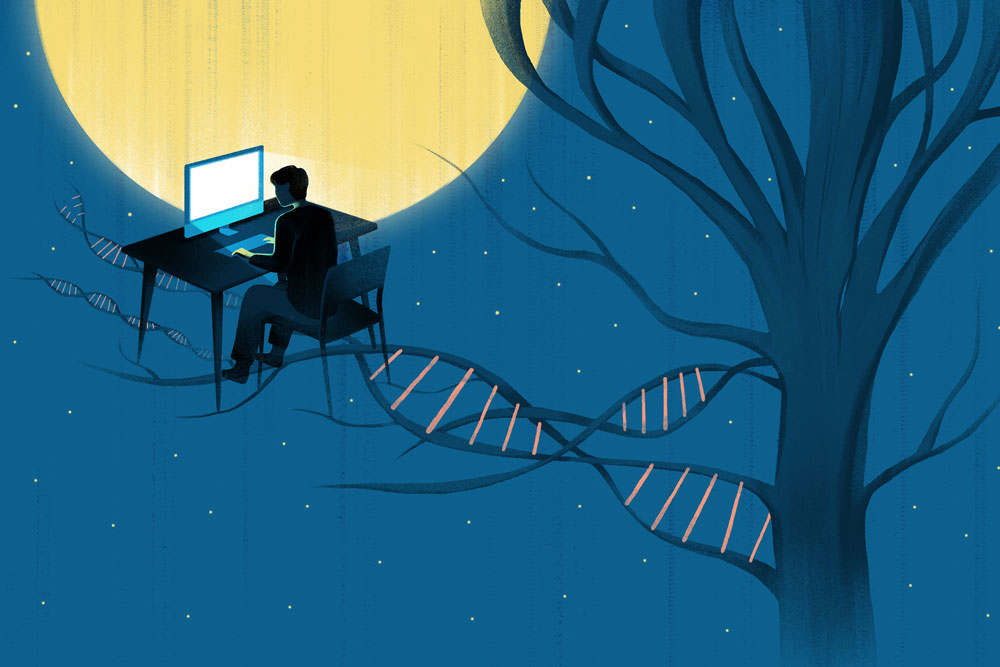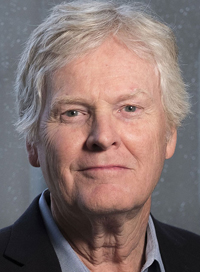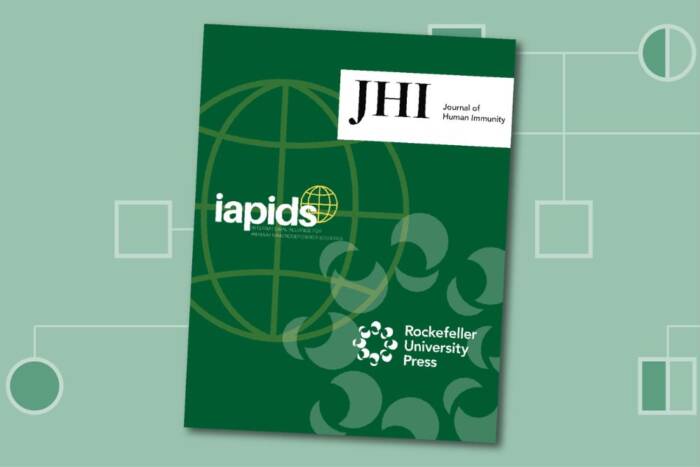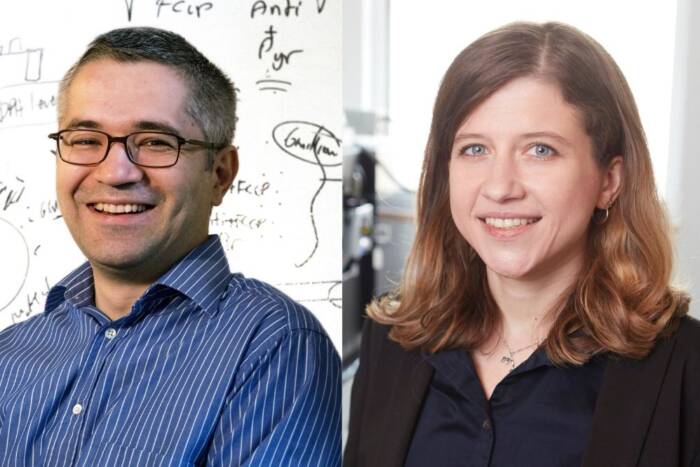Study identifies “night owl” gene variant

People who self-describe as night owls often have a sleep disorder encoded in their genes. (Illustration by Jasu Hu)
If you’ve been a night owl all your life and mornings are your nemesis, you may be able to blame a gene mutation for all those late nights.
Researchers at The Rockefeller University have discovered that a variant of the gene CRY1 slows the internal biological clock—called the circadian clock—that normally dictates when you feel sleepy each night and when you’re ready to wake. People with the “night owl” variant of this gene have a longer circadian cycle than most, making them stay awake later, the team reported on April 6 in Cell.
“Compared to other mutations that have been linked to sleep disorders in just single families worldwide, this is a fairly impactful genetic change,” says senior author Michael W. Young, the Richard and Jeanne Fisher Professor and head of Rockefeller’s Laboratory of Genetics. According to the new research, the mutation may be present in as many as one in 75 people in some populations.
Diagnosing night owls
The Centers for Disease Control and Prevention estimate that between 50 and 70 million adults in the US have a sleep or wakefulness disorder. These conditions—ranging from insomnia to narcolepsy—can predispose people to chronic diseases including diabetes, obesity, and depression.
People who self-categorize as night owls are often diagnosed with delayed sleep phase disorder (DSPD). Their 24 hour sleep-wake cycle is delayed, making them energetic long after most people have fallen asleep.
Going to bed late has its downsides: most people with DSPD are forced to wake up before their bodies tell them to in order to make it to work or school on time, leading not only to insomnia early in the night, but also to fatigue during the day.
Free-running sleep cycles
Young’s lab has studied the circadian clock for more than three decades, identifying a number of the genes involved in keeping flies, humans, and other animals on schedule when it comes to eating and sleeping.
To find out whether mutations in any known circadian genes were linked to DSPD, Young—along with research associate Alina Patke, the first and co-corresponding author of the new paper—collaborated with sleep researchers at Weill Cornell Medical College. Subjects were asked to spend two weeks in a laboratory apartment that was isolated from all cues to the time of day, eating and sleeping whenever they were inclined. Researchers also collected skin cells from each person.
Most people will follow a roughly 24 hour sleep-wake cycle when put in such a free-run environment. However, a DSPD subject that caught the researcher’s interest not only stayed up late, but had a cycle that was about 30 minutes longer. Moreover, changes in body temperature and hormones that cycle along with the circadian clock—including melatonin, which helps regulate sleep—were also delayed.
“Melatonin levels start to rise around 9 or 10 at night in most people,” says Young. “In this DSPD patient that doesn’t happen until 2 or 3 in the morning.”
A patient points the way
When the researchers examined the DNA from the DSPD patient, one variant stood out; a mutation in CRY1, a gene that had already been implicated in the circadian cycle.
In a healthy circadian clock, a handful of genes turn on and off over a 24 hour cycle. The protein made by CRY1 is normally responsible for suppressing some of these genes during certain parts of the cycle. But Young and Patke discovered that the mutation identified in the patient made the CRY1 protein more active than usual, keeping other clock genes switched off for a longer period of time.
The researchers reached out to other members of the patient’s family and discovered five relatives who shared the mutation in CRY1. All of them had signs of DSPD, or a history of persistent sleep problems, too.
Then, Young’s team turned to large genetic databases from around the world to determine the prevalence of CRY1 mutations. With a collaborator in Turkey, they first identified many unrelated families and dozens of Turkish people with the CRY1 mutation. After contacting them and administering interviews and questionnaires, the researchers were able to confirm that 38 people with the mutation had altered sleep behavior, while none of their relatives without the CRY1 mutation had unusual sleep patterns.
Finally, after scouring larger genetic databases for CRY1 mutations, Young’s group calculated that as many as one in 75 people of non-Finnish European descent have at least one copy of the DSPD mutation. The mutation is dominant, which means that having just one copy of it can cause a sleep disorder.
Burning the midnight oil
The researchers say that right now there’s no established benefit for DSPD patients in being tested for the CRY1 mutation.
“Just finding the cause doesn’t immediately fix the problem,” says Patke. “But it’s not inconceivable that one might develop drugs in the future based on this mechanism.”
For now, many DSPD patients are able to control their sleep cycles—and get to bed earlier than their body wants—by following strict schedules.
“It’s a bit like cigarette smoking in that there are things we can do to help the problem before turning to drugs,” says Young. Some patients seem to be helped by getting strong light exposure during the day, he adds.
The team already has future studies planned to work out whether CRY1 mutations also affect the metabolic cycles of people with DSPD, since the human circadian cycle is known to not only regulate sleep, but also hunger and levels of metabolites and hormones.



